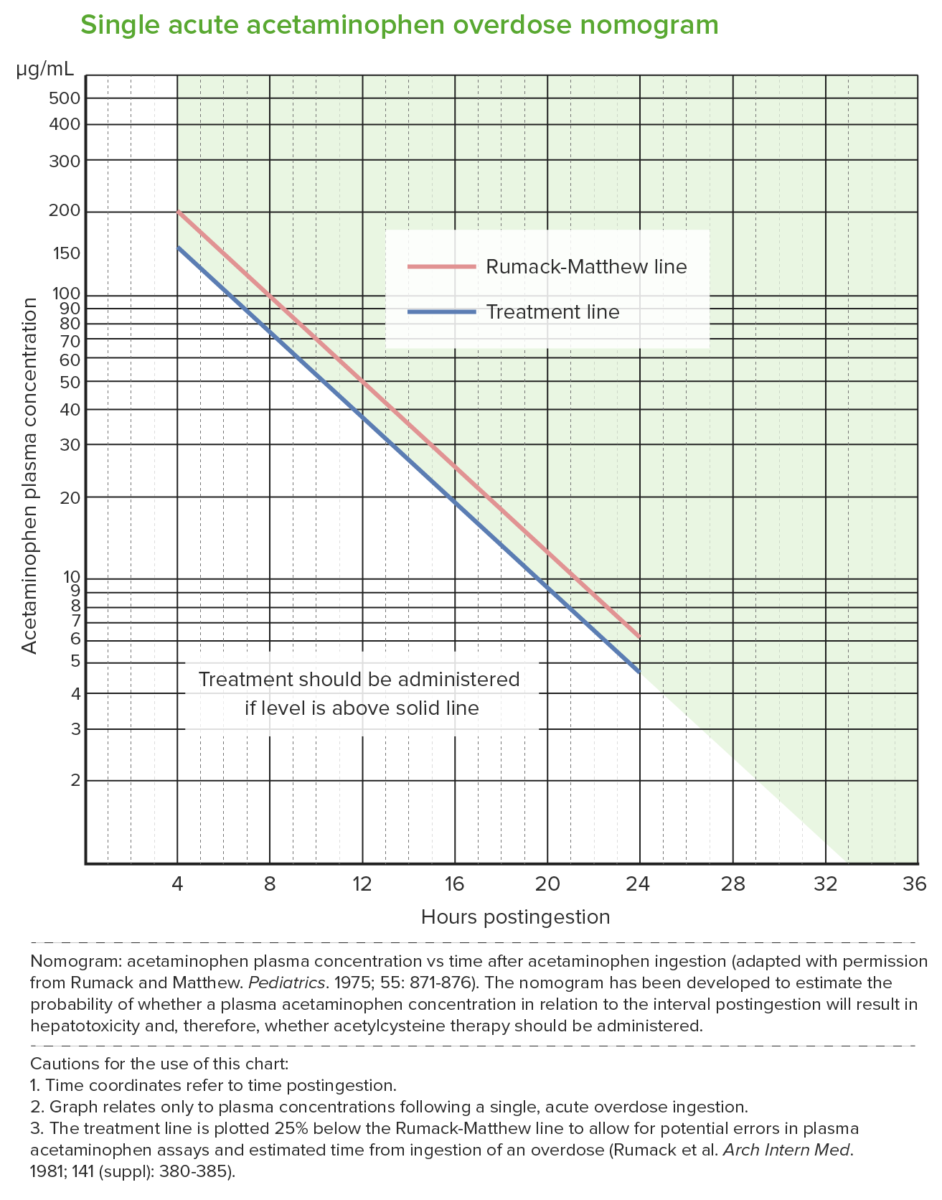Acetaminophen (APAP), or paracetamol, is an over-the-counter nonopioid analgesic and antipyretic medication. It is the most commonly used analgesic worldwide. Likewise, APAP overdose is one of the most common causes of medication poisoning and death. Acetaminophen is primarily metabolized by the liver; therefore, overdose can lead to life threatening hepatotoxicity. In adults, limitation of total APAP dose (from all sources and routes) to < 4000 mg per day is recommended. During evaluation, a thorough history and measurement of serum APAP are important, as the initial clinical signs of APAP overdose can be nonspecific. Management of overdose includes drug serum concentration, stabilization, decontamination, and administration of N-acetylcysteine (NAC). Use of NAC within 8 hours of ingestion is associated with good case outcomes. Without treatment, however, cases are at significant risk of severe hepatotoxicity and potentially death.
Last updated: Mar 4, 2024
The clinical course of APAP APAP Acetaminophen (APAP) is an over-the-counter nonopioid analgesic and antipyretic medication. Acetaminophen is the most commonly used analgesic worldwide. Acetaminophen overdose is also one of the most common causes of medication poisoning and death. Acetaminophen Overdose poisoning is often divided into 4 stages, which are classified according to duration since time of ingestion.[12]

Rumack-Matthew nomogram (acetaminophen toxicity nomogram):
Used after a single acute acetaminophen ingestion.
The nomogram predicts potential hepatotoxicity beginning at 4 hours after ingestion. Levels measured earlier than 4 hours may not be reliable.
The nomogram cannot be used for ingestions that occurred > 24 hours prior to presentation.
The upper (red) line is the Rumack-Matthew line; values above this line develop toxicity (noted in 60%).
The lower (blue) line is the treatment line (U.S. Food and Drug Administration required treatment line to be 25% below the original line).
NAC treatment is given when the acetaminophen level is at the treatment line 4 hours post ingestion (which is below the toxicity threshold).
Entails supportive care, limiting drug absorption Absorption Absorption involves the uptake of nutrient molecules and their transfer from the lumen of the GI tract across the enterocytes and into the interstitial space, where they can be taken up in the venous or lymphatic circulation. Digestion and Absorption, and treatment of toxic effects:

Overview of the treatment algorithm for acetaminophen toxicity
Image by Lecturio.